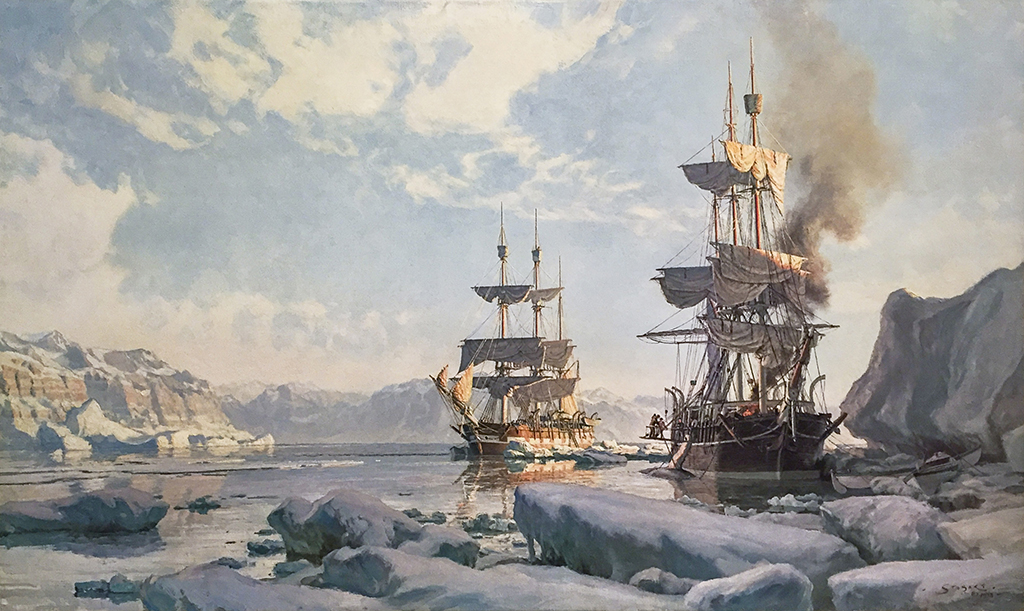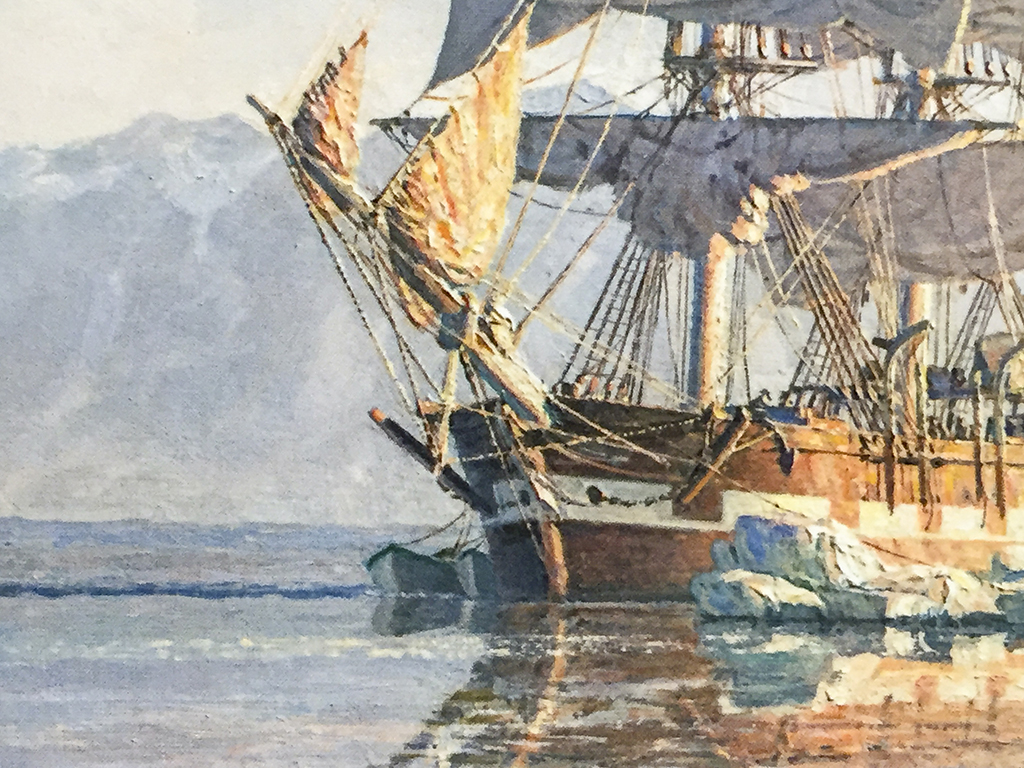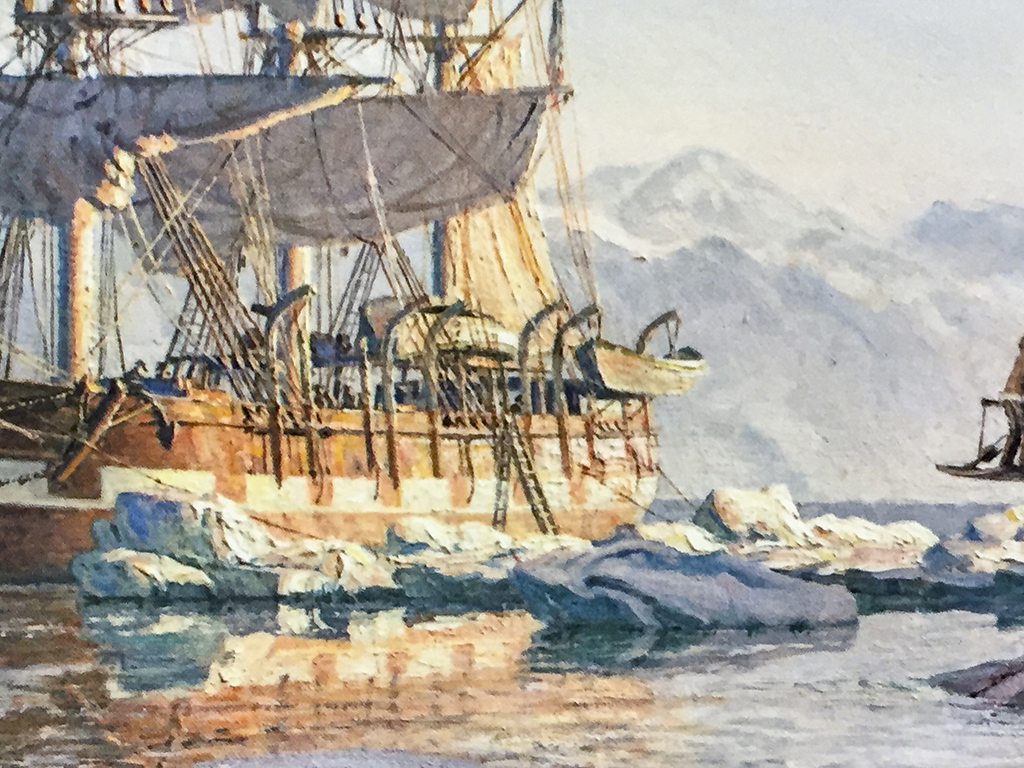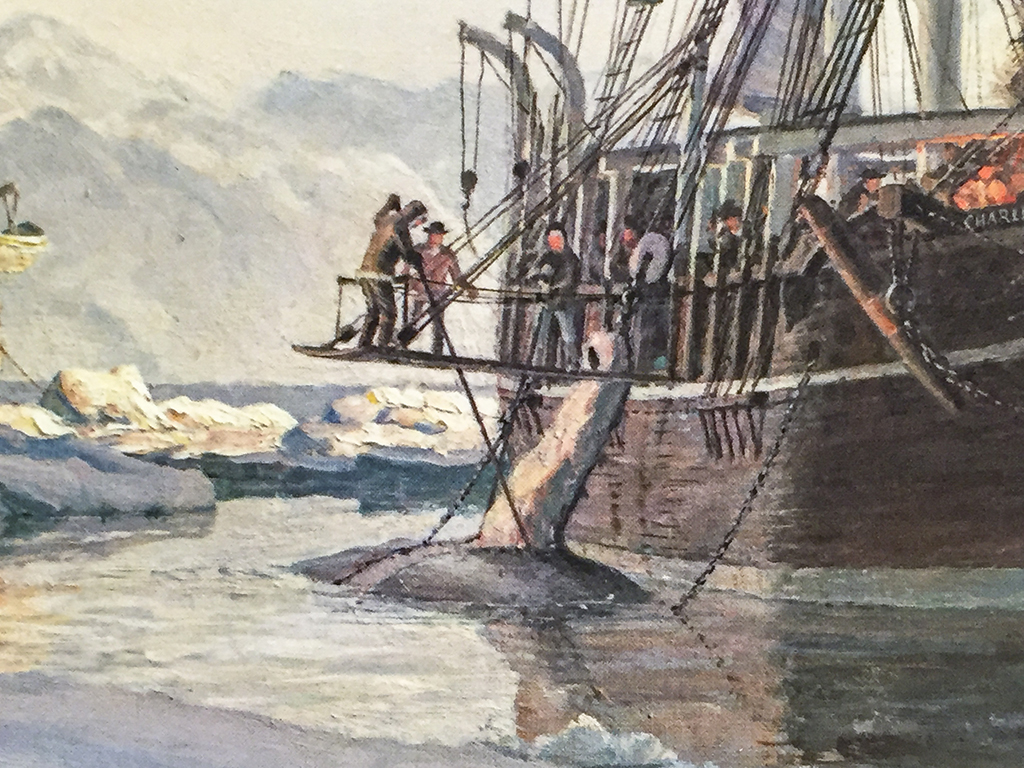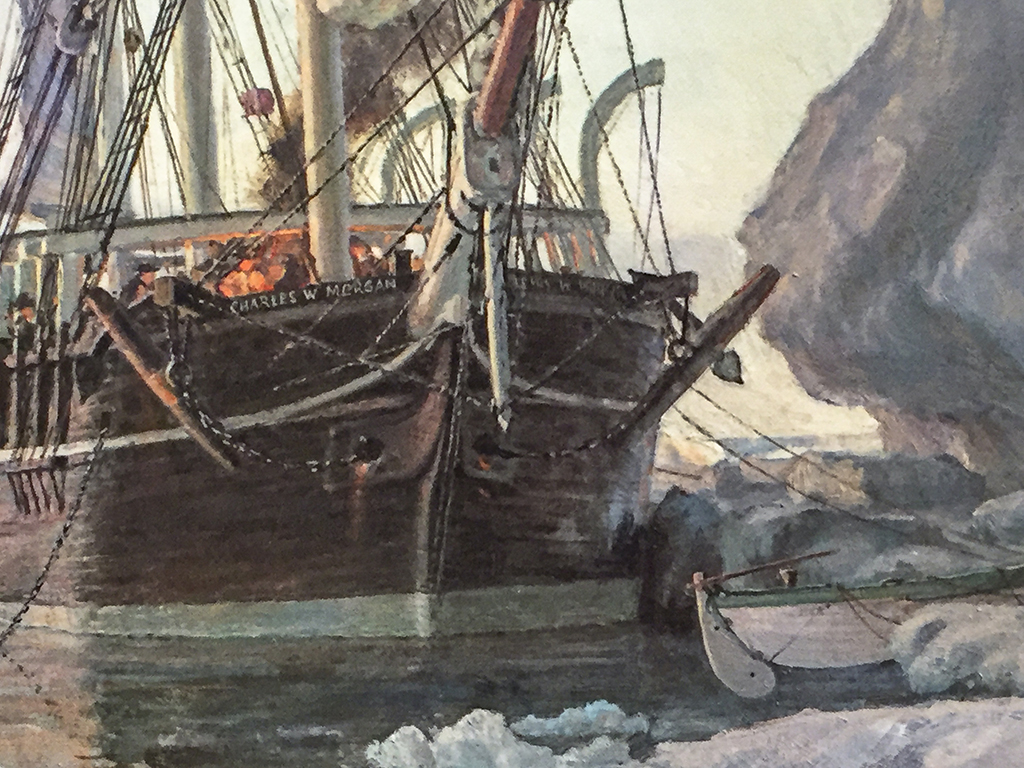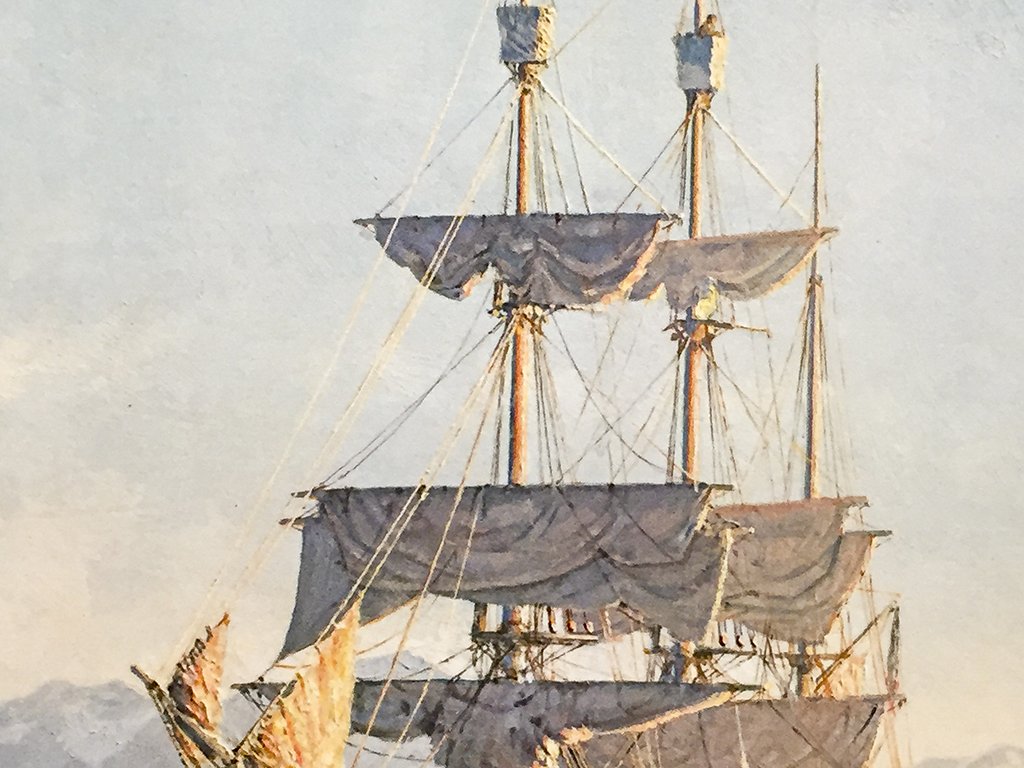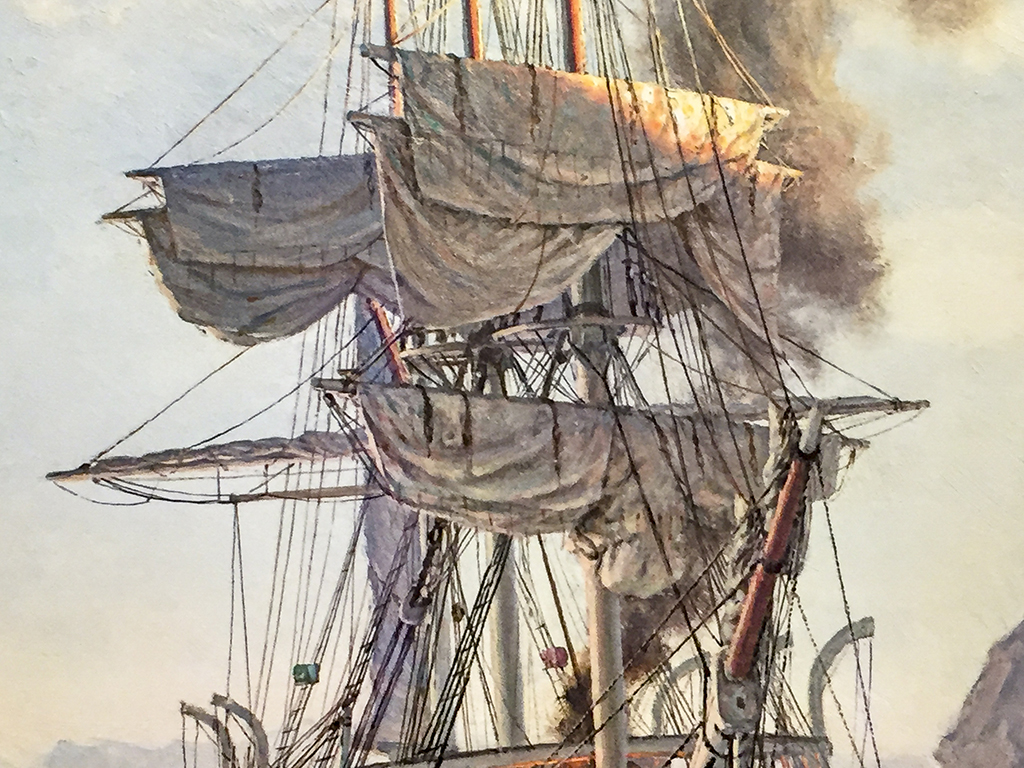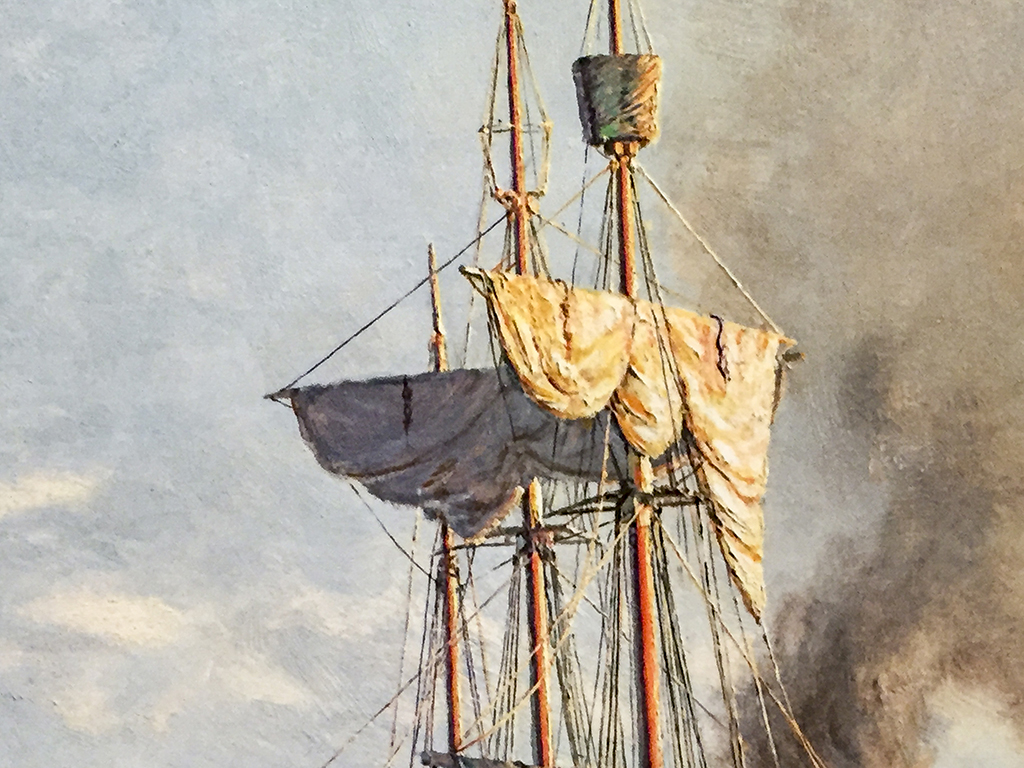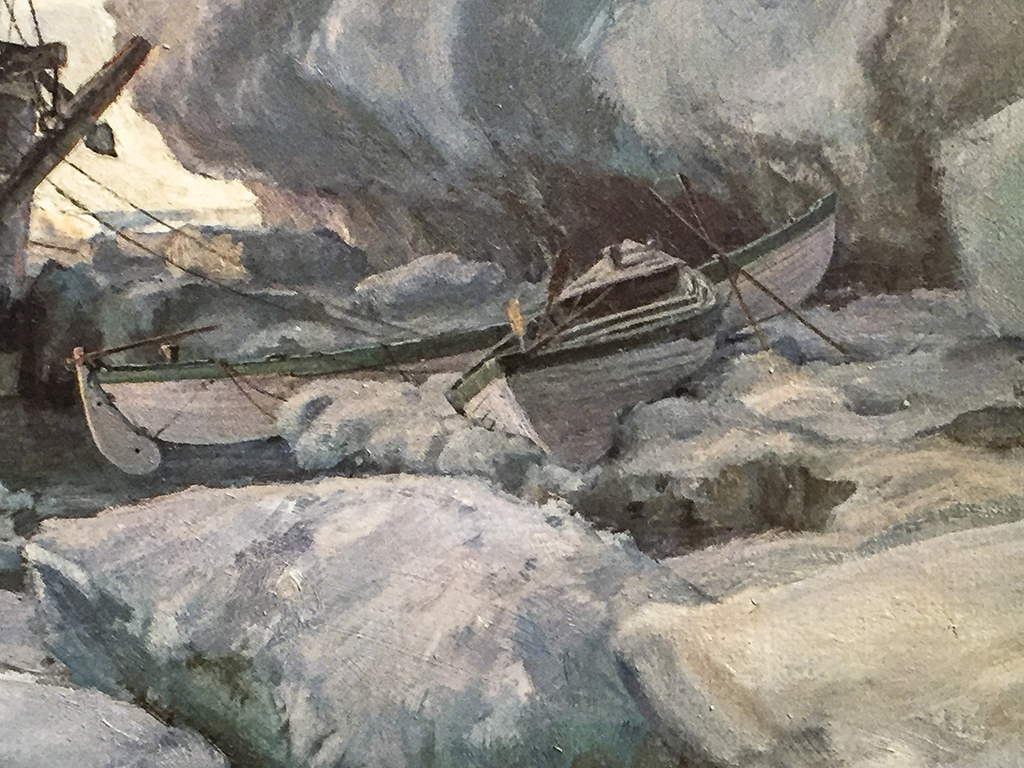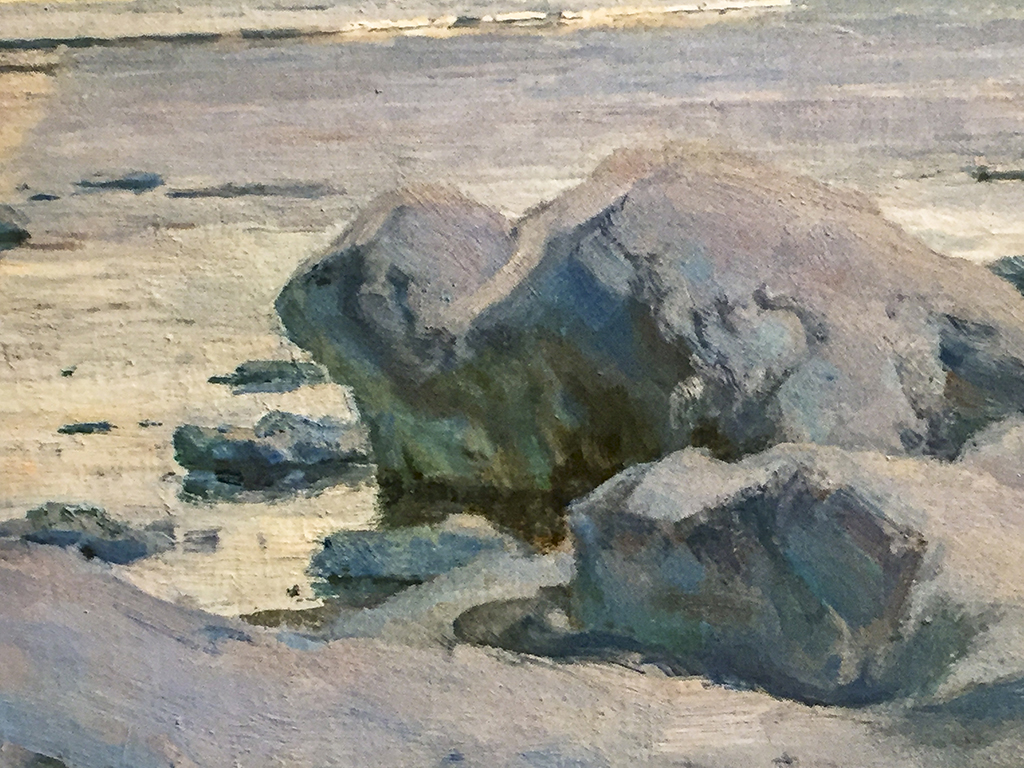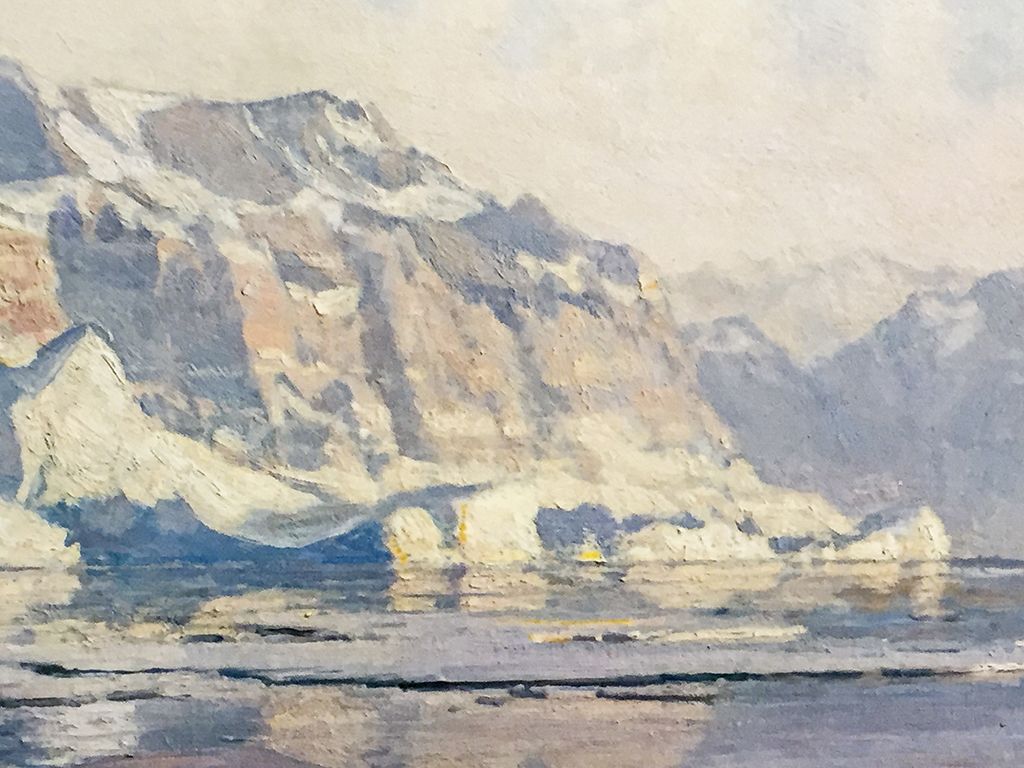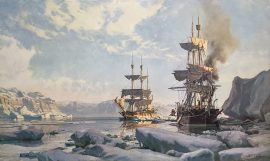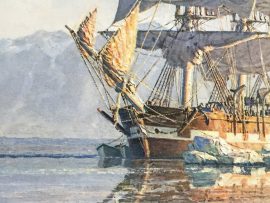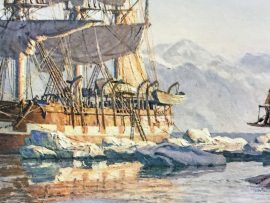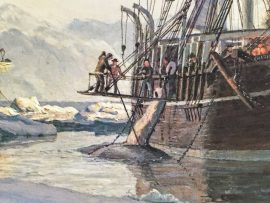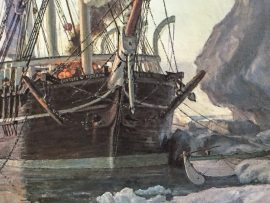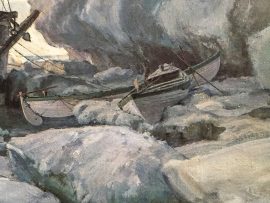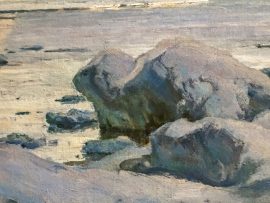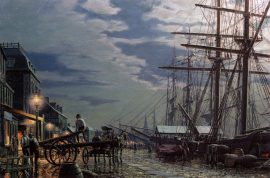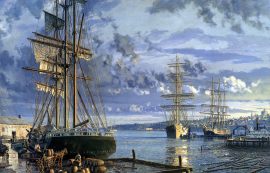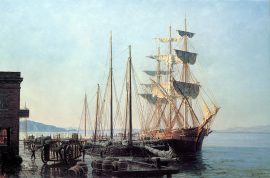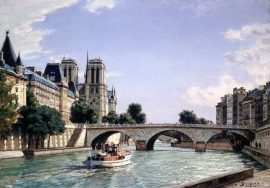Whaling In The Arctic: The “Charles W. Morgan” in 1884
$1,500.00
The Charles W. Morgan made whaling history as a high producer, earning about 1.4 million in a lifetime of thirty-seven successful voyages. The old ship refused to die, and today she rests in her final berth at the Mystic Seaport in Connecticut as the last surviving nineteenth-century whaler.
I have depicted the Morgan on one of her voyages into the Arctic during the cutting in of whale processing. Once the whale was towed alongside, the carcass was lashed to the vessel for cutting in. A work platform was lowered, and the officers began slicing into the whale, cutting off continuous strips of blubber called blanket-pieces. With tackle secured to the masts, these large pieces were pierced by hooks, hoisted up off the carcass, and hacked up by the crew into smaller pieces to be boiled in the try-pot on deck. Finally, the extracted whale oil was siphoned off into casks and stowed in the belly of the ship.
The Morgan was built in New Bedford by the yard of Jethro and Zachariah Hillman and launched in 1841; she cost 48,849.00 with a gross tonnage of around 313.
On her maiden voyage she rounded the Horn and fished the Pacific. After three years and four months out, the Morgan sailed into New Bedford with 2,400 barrels of oil and 10,000 pounds of whalebone. The vessel was engaged in the whale fishery for eighty years, making her last voyage in 1921. Over a thousand whaleman shipped out on the Morgan, and twenty-one different masters commanded her during her whaling years. In the age of airplanes, the electric light and the radio, there was still a sailing vessel at sea with men who were throwing harpoons at whales from small boats.
If any vessel deserved a decent end, it was the Morgan. In the final years of her whaling career, the Morgan starred in the movie Miss Petticoats, she was used for scenes in Down to the Sea in Ships with Clara Bow, and the old vessel appeared in Java Head for Paramount Pictures. From 1921 to 1941 the Morgan was berthed on the estate of Colonel Edward Green in South Dartmouth, Massachusetts. She was bought in 1941 by the Mystic interests and towed upriver to her permanent retirement home.
| Weight | 6.00 lbs |
|---|---|
| Catalog: | Stobart-187 |
| Artist: | John Stobart |
| Dimensions: | 19 1/2" x 32 1/2" |
| Edition: | 850 |

